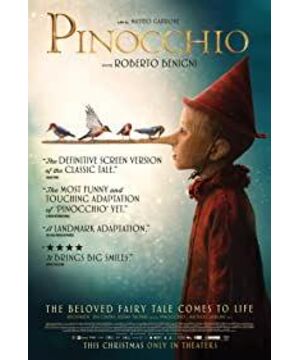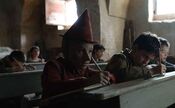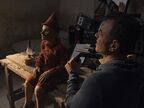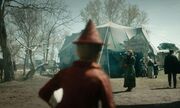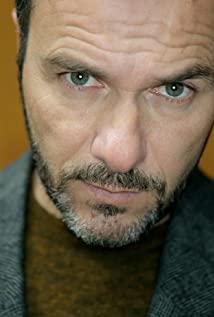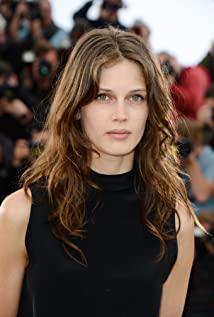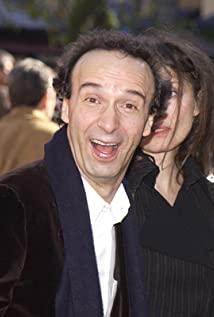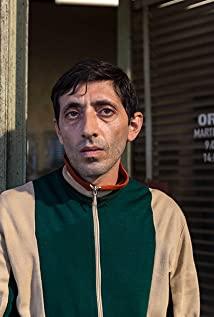"As long as you lie, your nose will grow longer." The little fairy teased the puppet Pinocchio mischievously. Lying, stubbornness, greed are punished, kindness, bravery, and hard work are rewarded... Is "Pinocchio" in the 61st file an educational film for children's "reward and punishment mechanism"? (The clue picture is attached at the end of the article)
No, it's actually a "black fairy tale"!
Pinocchio, the puppeteer, has not yet been involved in the world, and he is in a state of ignorance when dealing with others. In the film, he naturally has a filial heart. After losing, he has been looking for his father Geppetto (played by Roberto Bernini). Compared with the traditional values that discipline Pinocchio to become a "good puppet", the film more depicts the complexity of the adult world.
"Survival" is the art of dreaming. Pinocchio’s fantasy of "field miracle·money tree", "happy land·free country", the former is a lie fabricated by the fraud duo "lame fox, blind cat", and the latter is a child-trafficking hand "wizard horseman" "Fictional dreams. Faced with naked and bloody business tactics, Pinocchio fell into a dream trap, dismissing the advice of the old Cricket, "Remember those daydreamers, they will regret it sooner or later."
"Rule" is a combined game. Homes, courts, farms, schools...Different spaces have different operating rules. In the courts, the country of the orangutan judge put innocent people in jail, and Pinocchio used lies as a workaround to escape prison. In school, homework is a measure of children's "good or bad" standard, and the discipline tool used by the teacher is a ruler. On the farm, whether Pinocchio can get paid depends on strength... This interval and segmental rules constitute a game for the calculator. "People" are the product of discipline. Pinocchio saw the fairy again, she changed from a naughty and lively little girl to a knowledgeable and virtuous woman. He expressed to her that he wanted to be a "real child" and to grow up. The secret revealed by the fairy is, "You have to get used to being a good puppet, and from tomorrow you will go to school to study." The teacher's praise is a certification, and his excellent work meets the "human" standard. After Pinocchio was on the "right track" of "wise and cautious", the fairy gave him the appearance of "human". "Emotions" are invisible powers. Carpenter Geppetto carved Pinocchio. He originally wanted to create a unique tool for making a living. Due to loneliness and poverty, he placed emotions on the puppets and developed a sense of mission as a father. Meet Pinocchio, the puppet, the cruel leader of the puppet theater regains kindness, and the cowardly tuna in the shark's belly regains courage. They both shed tears at Pinocchio's kiss.
What has the times created?
Relevant information shows that this edition of "Pinocchio" is adapted from Carlo Collodi's fairy tale "Pinocchio" (1880). Collodi devoted himself to the Italian National Revival movement and portrayed children into good teenage roles. It is the trend of the times. In addition to the common "fantasy" features of children's literature, this work is also educational and entertaining. The director of the film, Matteo Galloni, was a painter. He was deeply influenced by the outstanding works of the Renaissance from the 17th to the 18th century. When processing images, he also did a lot of work on pictures, lighting, faces and movements. As early as 2015, Galloni had directed the film "Story of Stories", adapted from the famous collection of Italian Renaissance Boccaccio novels, "The Decameron".
The queen swallowed the bloody heart of the sea monster to give birth, the princess cut off the head of the monster to survive, the old woman asked the butcher to peel off her skin for beauty... "Tale of Stories" brought the Italian medieval dark fairy tale style to its fullest. Extreme, presenting the dark elements of human nature such as desire, obsession, terror, and selfishness frame by frame.
Today, the domestically screened movie "Pinocchio" was released in Italy on December 19, 2019. Most of the scenes were taken in farmhouses, villages, fields, dilapidated houses and other venues, creating a sense of desolate pastoral dreams. It also continues a fantasy dark fairy tale style.
Attachment: Pinocchio’s "reward and punishment mechanism" clues sorting out
_
Penalty 1: Father taught him to walk in the house, but he went straight to the field and was bitten by a vicious dog
Penalty 2: He had a dispute with the old man Cricket. When he woke up, the fire burned his legs.
Penalty 3: He played truant to go to the puppet theater to watch a play, and almost became a fire tool for the theater director
Penalty 4: The lame fox and the blind cat made up the lie of "planting a money tree". He was convinced that despite the old cricket's persuasion, he was chased by a killer and defrauded of gold coins.
Penalty 5: Facing the fairy’s question, he made up a series of lies and his nose grew longer and longer
Penalty 6: At the instigation of a "bad" classmate Vic, he got into the wizard's carriage and came to the "Happiness Land" to have fun, but turned into a donkey, sold to the circus to perform, and then was thrown into the sea
_
Reward 1: He expressed his love for his father to the director of the theater, and was willing to sacrifice himself for the life of the clown of the theater. Because he felt kindness and warmth, the director gave him 5 gold coins
Reward 2: As praised by the school teacher, the fairy prepares the "real child" ceremony for him
Reward 3: In the belly of a shark, he meets his father. He is willing to become a floating wood, allowing his father to escape from the sea. The tuna is infected by his courage and rescues them to the shore
Reward 4: He lives with his father, works hard, studies hard, and gets paid. The fairy gives him a "human" appearance
View more about Pinocchio reviews


